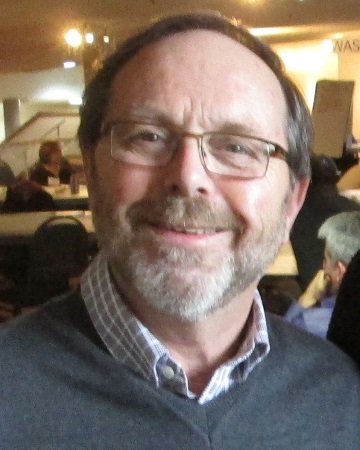
Dr. Glenn Smith helped guide us through the City Summit in late 2016.
When we use the word “missional,” we are affirming that the church by its very nature is sent into our neighbourhoods and cities as people living the implications of the gospel.
In order for the church to do this effectively, it is beneficial to know how to “exegete the neighbourhood,” in much the same way that they have learned to study a biblical text.
Reading your community is the first step to demonstrating a commitment to partnering with the community and establishing relational trust. This fosters a greater openness to a discussion of deeper, spiritual needs, and to Christ who meets all needs.
To begin the process of reading one’s community, let me propose steps to consider. These are best undertaken by teams – usually ecumenical “task forces” – that try to understand their community context.
After the “exegesis” or community assessment, it will be important to prioritize the initiatives that congregations will undertake.[1]
These steps can be divided into two sections – 10 Steps to Understand Context and 10 Steps to Consider Church Planting Initiatives.
10 steps to understand context:
1. Compile a list of significant historical events that inform the community’s identity. These could be historic conflicts that took place, unifying events such as the city coming together to fight a massive fire, decisions that leaders made such as the building of a community centre, or something that happened that gave people hope, such as a person doing something heroic or selfless. These will provide clues to the best way for the church to focus its energy.
2. Study the growth patterns of the city. One can find this information in libraries, city councils, museums, bookstores, local newspapers and on local websites.
• How and why is the city growing?
• Who are (and were) the immigrants to the city? Where did they come from and where are they settled? Where are they employed?
3. Study the design of the city.
• Understand clearly the sections or zones that make up the city.
• Find out from city planners and real estate offices where city populations are expected to move, where commercial and industrial zones will develop, and which areas are slated to undergo major changes.
4. Study the neighbourhoods: their ethnic, social and economic composition, religious affiliations, occupational patterns, younger and older populations, concentrations of the elderly, young professionals, singles, and problem groups. To understand a neighbourhood, you must walk the streets and talk to people, insiders and outsiders. Census data is important, but onsite observation is best. People groups criss-cross in the community.
5. Determine and analyze the power centres in the community: the political figures, the police department, the business leaders and the Chamber of Commerce, the religious leaders. Who controls the media – TV, radio, the newspapers? Who controls commerce and finance? The schools and the arts? What are the religious and moral commitments of the people in positions of power?
6. Analyze the dreams, aspirations, hopes and expectation of specific people groups within the community. Observe the obstacles that various groups identify to attain these aspirations. In some communities, such things as personal illness, loneliness, physical hardships, insecurity in terms of housing, property rights and the threat of losing one’s dwelling are very real. You are looking for indications of receptivity and “keys” which may unlock doors to homes and hearts.
7. Examine the traffic flow. Just as successful advertisers know where to place their signs, practitioners need to know where to begin their ministries, where they can readily be seen and reached. Find out where these sites are located: community service centres, libraries, police stations, fire stations, city hall, shopping centres, sports facilities and any other significant places.
8. Seek to discover how news and opinion spread in the community, and in particular groups. Mainly through conversation? By radio or TV? Who are the idea-people, the opinion-makers? Subscribe to the weekly publication in the area. Read it faithfully.
9. Examine the relationship between city-dwellers and the rural, small-town communities outside the city. Do certain segments of the urban population maintain strong ties with their rural cousins? Is there a lot of travel and visiting between city and village? What are the present immigration patterns from the countryside? How might the urban-rural interaction be used for the spread of the gospel and multiplication of churches? Most of this information is available in census data.
10. Identify and map the local ministries and churches in the community; identify them by denomination, size, and age. What transformational ministries and social services are already taking place through these ministries and churches? Reflect on what the church map shows.
10 steps to consider for church planting initiatives:
1. Analyze the various types of existing churches. Find out the growth patterns (if any) of the various churches: attendance, membership and rate of growth. Try to determine the nature of the growth: is it by transfer, conversion or by births? One can often locate this information by chatting with congregational leaders.
2. Inquire about church planting efforts and church closures in the past several years. Which churches have closed? Why? Who has started new churches, and why and where did they succeed? Learn all you can from them.
3. Who is currently planning to start new churches? Where, and among which people groups? Find out all you can from church and mission sources as to what is being planned for the community.
4. Strategies: what has been tried in the past, what has failed, and what was effective in starting churches and stimulating growth? Analyze the information you receive. In the light of recent church growth studies, what has been “done right” in this community and where ought things to have been done differently?
5. Christians and non-Christians: where are the Christians located (of course, this may not be where they attend church)? Identify areas of the city where relatively few Christians live.
6. Identify Christians in positions of influence in the city: in business, politics, the media, education, entertainment and sports. Analyze their potential for wider spread of the gospel and assistance in planting churches.
7. List and analyze the parachurch ministries (if any) operating in and to the community. How might each contribute something to the overall strategy? Are there some you may want to avoid because they might have a negative influence on church multiplication?
8. Make an inventory of all possible personnel resources that might be tapped for the carrying out of your church planting strategy. For example, are there Bible college or seminary students available to help with door-to-door calling? Could interns be borrowed from existing churches to help younger congregations?
9. Evaluate all known methods for church planting in light of what you know about this community – its history, people, existing churches and particular characteristics. What methods have proven effective elsewhere and appear appropriate for this community – and are within the capabilities of your resources.
10. List and evaluate the community agencies (private, religious and civic) that are designed to meet particular needs (literacy, overnight shelter, emergency food and clothing, and so on) and consider how their help can be incorporated into your overall strategy.
Application in Montréal
 Exegeting a community in Montréal brought transformation and fruitful community-wide collaborative ministry opportunities.
Exegeting a community in Montréal brought transformation and fruitful community-wide collaborative ministry opportunities.
In 2006, Christian Direction, in conjunction with Roman Catholic parishes and Protestant congregations, published a 45-page study of the east end of Montréal, using these twenty steps. This borough is the poorest continuous borough in Canada going back to the 1871 census![2]
Numerous initiatives have been launched as a result of that study. For example, to address the 55 percent high school drop-out in the neighbourhood, in collaboration with another social service agency, we started a centre to work with adolescents, their families and the local schools to promote school success.
Together with others in the borough, we advocate with local businesses so they do not employ kids during the school day. To address the relational poverty, there are four events each year to break the deep solitude people experience. To break the cycle of intergenerational poverty, three “financial capability” projects[3] have been started for young people and their families. In a short time, all three were generating income.
At the heart of the vision are the key indicators of a transformed community. This same experience is now being repeated in 18 other boroughs on the island of Montréal and four other cities in Québec.
This example emphasizes the efficacy of how research can and must inform transformational strategies. In order to further the church’s mission in our communities, we have to learn first of all to read those communities.
[1] In Québec, Christian Direction has worked with congregations in 10 different cities and boroughs to implement these steps. To obtain a copy of one of the studies, visit our website: www.direction.ca.
[2] David Ley, “The Inner City,” in Canadian Cities in Transition: Local Through Global Perspectives, ed. Trudi Bunting and Pierre Fortin (Don Mills, Ontario: Oxford University Press, 2006) 195.
This article is an excerpt from a more detailed paper by Glenn Smith: Reading your Community: Towards an Authentic Encounter With the City.
